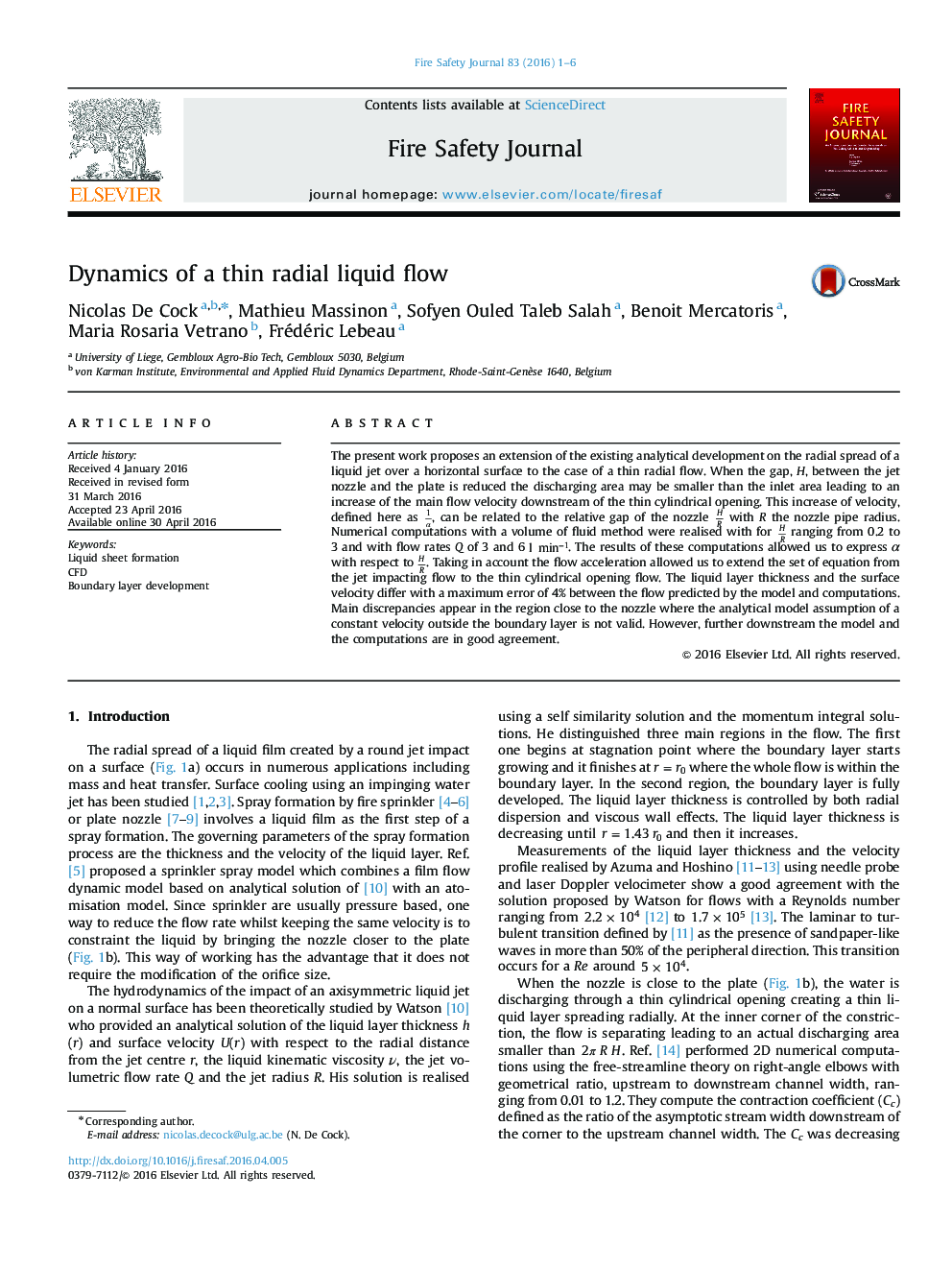| Article ID | Journal | Published Year | Pages | File Type |
|---|---|---|---|---|
| 269684 | Fire Safety Journal | 2016 | 6 Pages |
•A numerical study of the influence of the proximity between a nozzle and a wall on the development of the resulting liquid sheet.•A significative flow acceleration is observed when the gap over radius ratio is below 1.5.•An extension of the liquid sheet formation proposed by Watson is presented.•The velocity and thickness differences between the “new” model and the simulation is below 5%.
The present work proposes an extension of the existing analytical development on the radial spread of a liquid jet over a horizontal surface to the case of a thin radial flow. When the gap, H , between the jet nozzle and the plate is reduced the discharging area may be smaller than the inlet area leading to an increase of the main flow velocity downstream of the thin cylindrical opening. This increase of velocity, defined here as 1α, can be related to the relative gap of the nozzle HR with R the nozzle pipe radius. Numerical computations with a volume of fluid method were realised with for HR ranging from 0.2 to 3 and with flow rates Q of 3 and 6 lmin−1. The results of these computations allowed us to express α with respect to HR. Taking in account the flow acceleration allowed us to extend the set of equation from the jet impacting flow to the thin cylindrical opening flow. The liquid layer thickness and the surface velocity differ with a maximum error of 4% between the flow predicted by the model and computations. Main discrepancies appear in the region close to the nozzle where the analytical model assumption of a constant velocity outside the boundary layer is not valid. However, further downstream the model and the computations are in good agreement.
